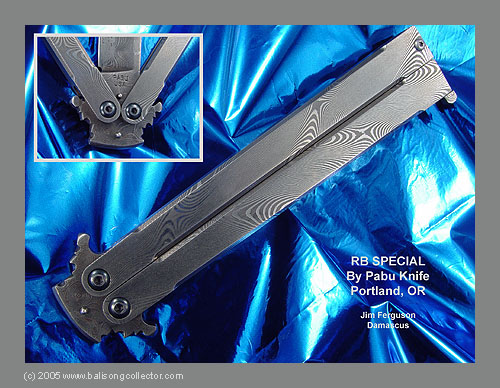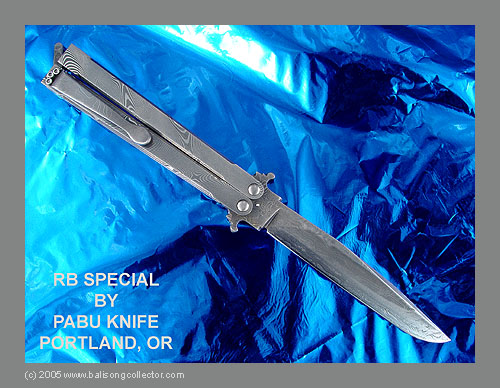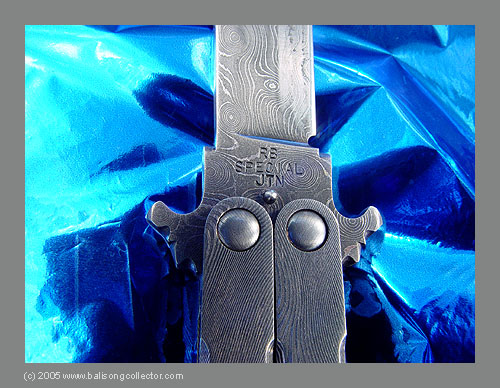


Notice how, when the knife is latched closed, one of the two tang pins disappears completely and the two handles appear to be almost one solid piece.

When the knife is open, the other tang pin disappears.
The blade is made of a different Damasus steel made by Mr. Ray Coon of Portland, Oregon. Mr. Coon is also an accomplished knife maker himself.
On the blade, you can see the wavy lines of the Damascus, but you can also see another profound line. This line, called a Hamon line, is the result of differential tempering. The edge of the blade has been heat treated to a higher hardness than the rest of the blade. Being harder makes the high-carbon alloy more resistant to the etch resulting in less contrast in the Damascus pattern, but it also lets the steel take and retain a sharper edge. Leaving the rest of the blade softer not only allows more contrast in the beautiful Damascus metal, but it makes the blade less brittle and less likely to shatter or break. Notice the sharpening choil at the base of the edge and the elaborate horns.
Differential tempering is sometimes called "Clay Hardening" because it was originally -- and sometimes still is -- accomplished by covering part of the blade with clay during part of the heat treatment process.
The benefits of differential tempering on a blade of this length are debatable. This process is most commonly seen on swords where it can allow a the blade to remain flexible and yet take and retain a sharp edge. It's most common on Japanese swords and the term "Hamon line" comes from the vernacular of Japanese swords.
Even if it's not of great benefit on a blade of this length, it's still very attractive and it's an extra demonstration of the knife maker's mastery of heat treating techniques.

Notice that the Chicago Screw pivot pins are Pabu-made of Ferguson Damascus steel.
Click on the finger icon to read more about this interesting Pabu balisong .